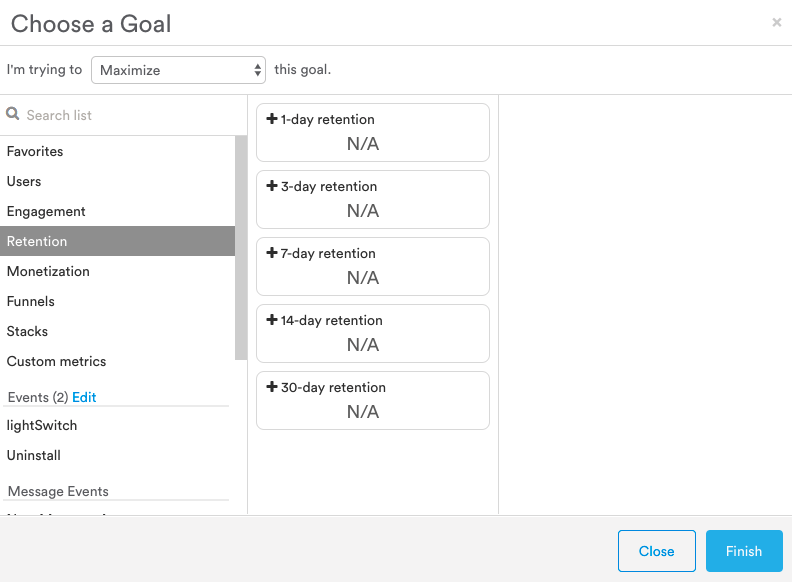Setting test goals
Goals are metric-based objectives that you are aiming to maximize or minimize with an A/B Test. Leanplum uses your goal metrics to estimate how long the test will take to reach statistically significant results.
Adding a goal
In the A/B test environment, click the Add ( + ) button to set a new goal, this will open the goal selector window.

You can select any of the out-of-the-box Leanplum metrics or choose a goal based on one of the custom events or states that you are sending to Leanplum.
How goals work
You’ll need to specify whether you want to maximize or minimize each goal metric added. All goals must be either a percent or a ratio. Nominals are not supported as goals and will be grayed out in the goal selector window.
Favorites are great for any secondary metrics that may not necessarily be essential to the success of the test but are still important to take into consideration. For metrics that you want to see for multiple A/B tests (and messages), you can save time by adding them to your Favorites section in the analytics center.
For example, if you were testing a new color on the order checkout button, your goal might be to maximize purchases. Some favorited metrics you might want to keep your eye on are 3-day retention, percent of daily users who purchased, and time spent in app.
Reaching your goals
Add as many goals as you like, but we recommend adding only metrics that will truly make or break your test. A test with many goals will return statistically significant results slower than a test with just a few, so be mindful of how long you want to run your test for. A larger audience size can also help speed up the time your test needs to reach significant results.
Updated 4 months ago
